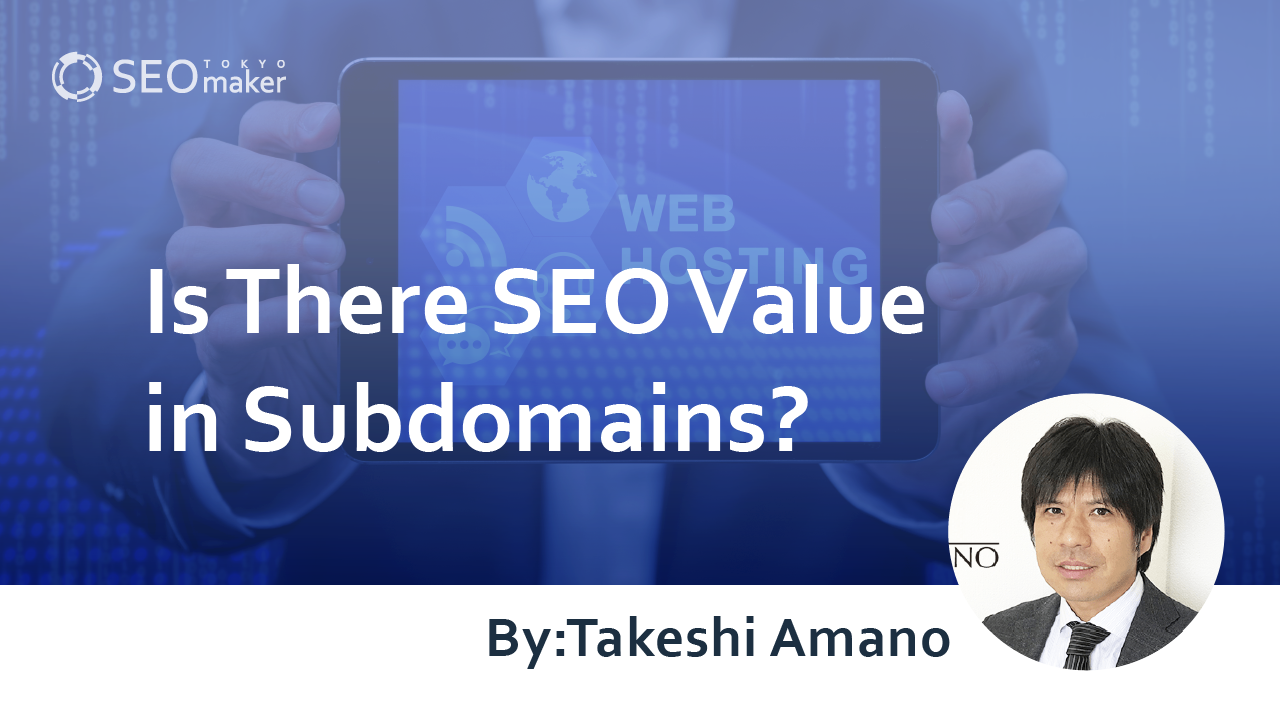Is there any SEO benefit to using subdomains? : The difference from Subdirectories
contents

Which should you use when launching a new service: a subdomain or a subdirectory? Which one is more advantageous for SEO?
Although Google states there is no SEO advantage to either, practical use reveals some differences.
In this article, our SEO consultant will focus on explaining these differences and how to choose between them.
The differences between subdomains and subdirectories
Before we explain the differences between subdomains and subdirectories, let’s first give a brief overview of each.
Understanding Subdomains
A domain is essential when creating a site. For instance, in the URL for Yahoo, the part before ‘yahoo’ represents a subdomain.
For example, Tokyo SEO Maker uses the domain ‘switchitmaker2.com’. If launching a separate service, they might use a subdomain like ‘sub.switchitmaker2.com’. This ‘sub’ part, added before the main domain, is called a subdomain.
Understanding Subdirectories
Subdirectories are directories created under another directory. They appear in URLs like ‘https://…/sub/’, following the domain.
Subdirectories are used in almost all site operations, making them a standard practice.
Choosing Between Subdomains and Subdirectories
Both use the main domain, but they serve different purposes.
Subdomains are typically used for a different themed service, while subdirectories are used for different pages under the same theme. You’ll choose between them based on your specific needs.”
Therefore, subdirectories usually suffice for regular site management. However, if deploying an entirely different service, you might consider using a subdomain or even a separate domain.
Making Directories and Subdomains User-Friendly
When creating content, aim to improve quality consistently, increasing the chances of being valued by users and shared on social media. However, if your URLs are cumbersome, it might reduce sharing opportunities. Here are some tips for setting user-friendly URLs.
Ensure the URL reflects the page topic. Avoid sequential numbers and opt for topic-descriptive URLs. Use hyphens (‘-‘) instead of underscores (‘_’).
Example of a poor URL: https://www.**********.com/SEO/1234.html
Better URL example: https://www.**********.com/SEO/meta-keywords“
Additional Points to Consider: Once you set a URL, avoid changing it frequently.
If the original URL has acquired external links or has been shared on social media, changing it can lead to a ‘404 error’ for users coming through these links, and any accumulated SEO value from Google could be lost. If you must change the URL, use a ‘301 redirect’ to minimize risks.
Also, avoid using Japanese URLs and stick to alphanumeric characters.
Using Japanese in URLs can cause them to appear garbled when copied and pasted. Sharing these URLs on Facebook might result in them being displayed in an encrypted-like format. Depending on the SNS or tool, this could even lead to ‘404 errors’. Be cautious.
If your website is already published, changing URLs is not a significant ranking signal, so there’s generally no need to change them. However, if a change is necessary, don’t forget to set up a ‘301 redirect’ for each affected page.
Exceptions for Subdomains and Subdirectories
As previously mentioned, subdomains often imply different themes or separate sites, while subdirectories are typically viewed as the same site under the same theme.
However, there are exceptions like Yahoo! JAPAN, where all services under the subdomains belong to the same company, or cases where subdirectories are used for completely different sites.
For example, if you look at the top four entries in the celebrity rankings on Ameba Blog as of November 7, 2020, you’ll see that each one is a separate site with a different theme, yet they are all hosted under subdirectories.
This suggests that search engines use a variety of indicators, not just URL information, to determine if pages belong to the same site. These include visual design (CSS), source code, structured data, backlink profiles, and anchor text.
SEO Effects of Subdomains
As mentioned at the beginning, Google has stated that subdomains do not offer any special SEO benefits. This means that when launching a new site or service, it doesn’t matter whether you use a subdomain or subdirectory.
However, while there may not be direct SEO benefits, operational SEO benefits do exist.“
Passing on Backlink Effects
Subdomains can inherit some of the backlink effects (domain power) from the main domain. However, while subdirectories directly receive the main domain’s backlink effects, subdomains do so only indirectly.
Considering domain power, subdirectories are generally more advantageous.
Impact on Indexation
As previously noted, subdomains are typically recognized as separate sites. Therefore, adding pages to the main site does not affect the subdomain, and vice versa. This can make it harder to increase the index count for subdomains.
While simple index counts don’t directly impact SEO strength, having more high-quality content certainly benefits SEO.
In this regard, subdomains are at a disadvantage.
Choosing Between Subdomains and Subdirectories
You might think subdirectories are better for SEO effects than subdomains, but it’s not always the case.
Especially when launching a new service, whether to use a separate domain should be carefully considered.
Advantages of Separate Domains
Acquiring a new domain starts from scratch in terms of domain power, which can be a disadvantage in the short term.
However, if offering a completely different service, using the same domain to expand subdirectories might negatively impact user UI/UX and dilute the main domain’s expertise.
While you could later transfer services within the main domain and maintain their value through 301 redirects, redirects are not foolproof and are better avoided if possible.
In the long run, launching on a separate domain can be advantageous, so it’s vital to strategically consider subdomains, subdirectories, and separate domains.
Separate domains are also recommended if considering future site mergers and acquisitions, as they tend to involve fewer complications.
Advantages of Subdomains
You might conclude that subdomains are disadvantaged, but they are useful when separate domains do not benefit from the main domain’s power, and subdirectories disadvantage the site’s focus.
While subdomains are less favorable in terms of domain power and indexation, they allow you to launch new services with reduced cost and risk.
User Experience is Paramount
Ultimately, the most important consideration is user experience.
When user-first thinking suggests that subdirectories are best, use them without hesitation. If it disrupts the site’s navigation, consider separate domains or subdomains.
Ultimately, the best site management focuses on creating sites that serve users well, prioritizing their needs over SEO metrics.
If you’re struggling with how to manage domains as you expand your business, consider consulting with Tokyo SEO Maker. Our SEO experts will analyze your situation and provide guidance on the best practices for managing your domains.










![What is a Description? Explaining the Meaning, Writing Style, and Changing Word Count – [2023 Edition]](https://www.switchitmaker2.com/en/wp-content/uploads/2024/09/what-is-description.webp)










